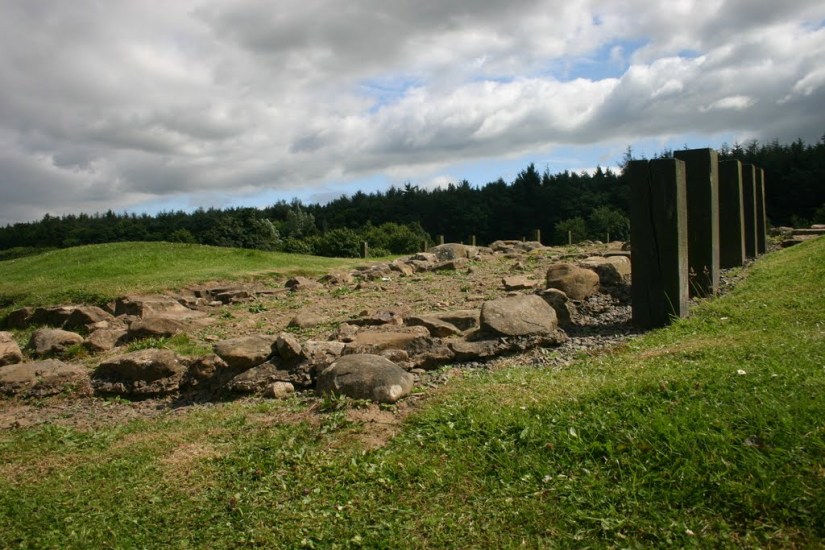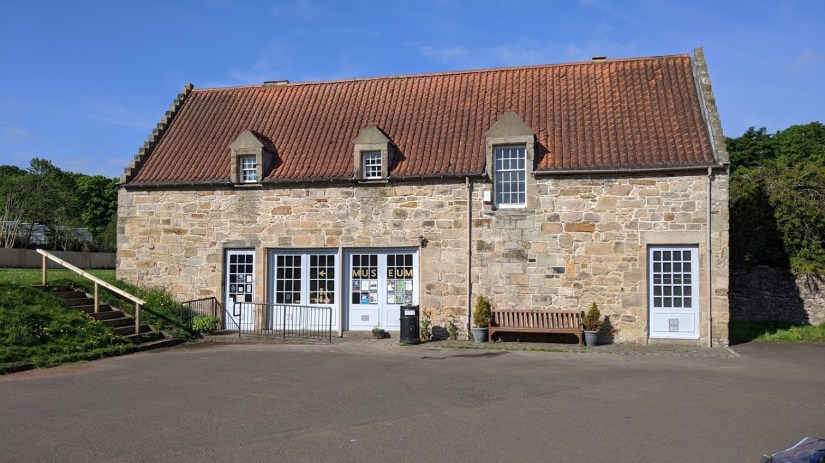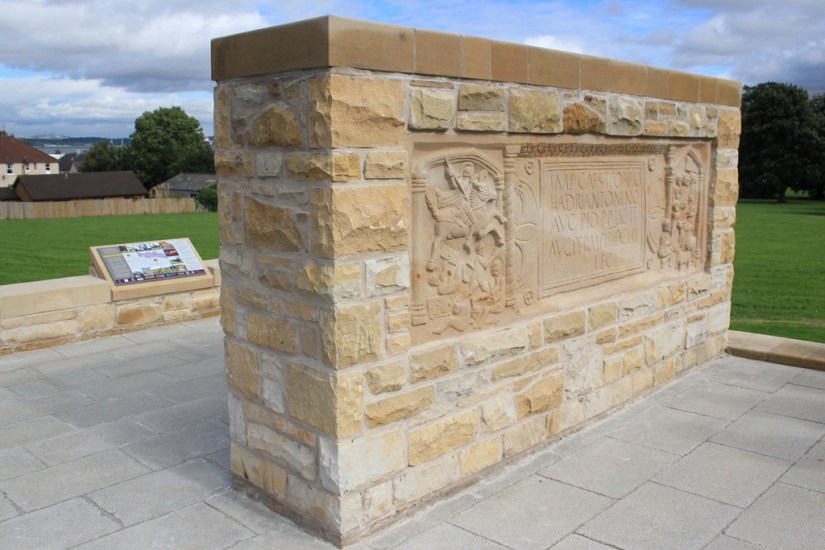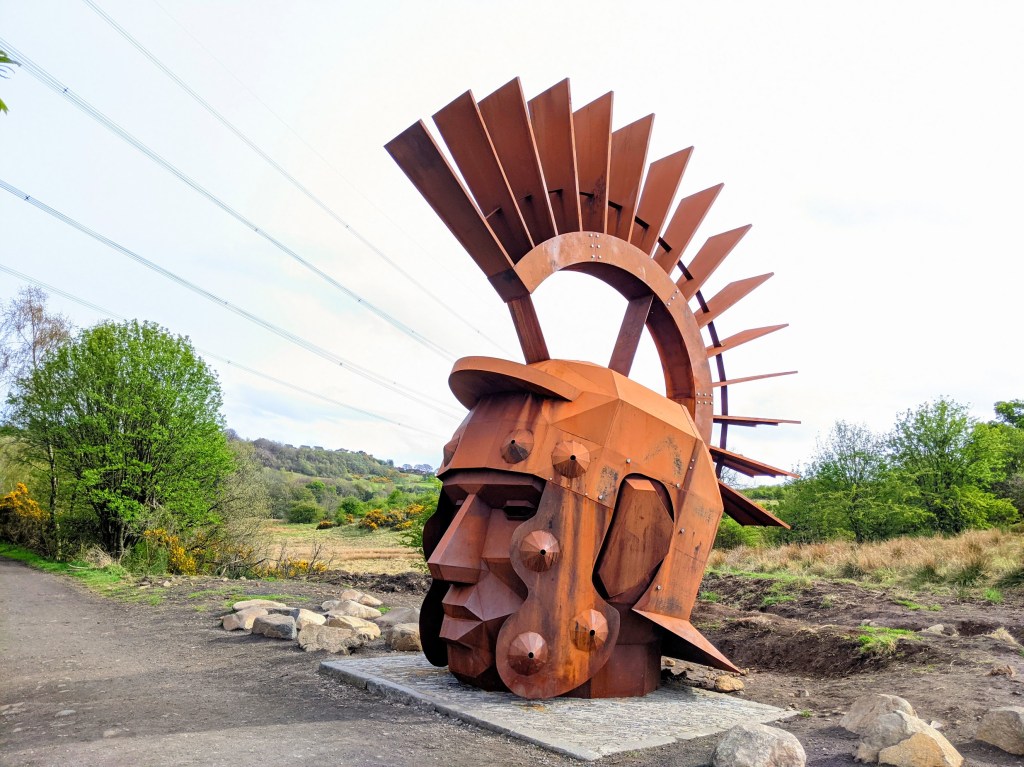
Remains of a Roman fortlet lie to the west (rear) of Kinneil House, Bo’ness.
The Antonine Wall was built by the Emperor Antoninus Pius to hold back Caledonian tribes from invading southern Scotland, then under Roman rule.
Unlike the stone-built Hadrian’s Wall, the Antonine Wall consisted of a rampart of soil, faced with turf, resting on a stone foundation. It stood 12 feet high, and was protected on the north side by a wide, deep V-shaped ditch. It was abandoned around AD 160, when the Romans retreated to Hadrian’s Wall.
Today, many parts of the Antonine Wall lie under towns and settlements, built long after the Romans departed Scotland. However, evidence of the wall’s ramparts and buildings can still be found.
The Bo’ness area is fortunate in having a number of highly visible parts of the Antonine Wall.
You can see:
- replica of a Roman Tablet at Bridgeness, Bo’ness
- the remains of Roman fortlet (pictured above) at Kinneil Estate, Bo’ness
- a Roman-inspired sculpture at the entrance to Kinneil Estate
- stretches of the ditch at Polmont Woods
- Callendar Park in Falkirk
- Watling Lodge, Tamfourhill (near the Falkirk Wheel)
- Rough Castle, between the Wheel and Bonnybridge
- Seabegs Wood, near Bonnybridge
- a fort site near Castlecary
There are also free exhibitions on the Romans in local museums:

Kinneil Museum in Bo’ness features Roman displays and artefacts.
Outside the district, there are displays in the:
- Auld Kirk Museum in Kirkintilloch
- the Hunterian Museum in Glasgow
- the National Museum of Scotland in Edinburgh.

The impressive Bridgeness Slab replica in Bo’ness.
In 2008, the Antonine Wall became part of the Frontiers of the Roman Empire World Heritage Site, which also includes Hadrian’s Wall in England and the German Limes. In 2012 a replica of the Bridgeness Roman Tablet (pictured above) was unveiled at Harbour Road, Bo’ness – a short drive from Kinneil Museum. A new Antonine Wall website was launched in 2014.
Check the Kinneil homepage for information on Kinneil open days
On this site:
Also online:
- Historic Scotland has published a leaflet about the Antonine Wall. You can download it in PDF format by clicking here.
- Check out a page on the Antonine Wall on the BBC website.
Discover the Antonine Wall:
- IN FALKIRK DISTRICT – on the Visit Falkirk website
- IN NORTH LANARKSHIRE – on the North Lanarkshire Council website
- IN EAST DUNBARTONSHIRE – on the East Dunbartonshire Leisure and Culture Trust website
- IN GLASGOW – on the Glasgow City Council website.
- IN WEST DUNBARTONSHIRE – on the West Dunbartonshire Council’s website.

The modern sculpture of a Roman soldier’s head sits on Croy Hill, near Kilsyth.
Close to the Wall sites in Falkirk district:
- Bo’ness and Kinneil Railway
- Kinneil House, Estate, and Museum, Bo’ness
- Callendar House, Falkirk
- The Helix Park and the Kelpies, Falkirk/Grangemouth
- The Falkirk Wheel
- The Forth and Clyde Canal
- The John Muir Way
For local tourism information, check out www.visitfalkirk.com
Videos:
Videos produced by the Rediscovering the Antonine Wall project
Still images by Adrian Mahoney.
This page was first published in 2011 and last updated in 2023.
You must be logged in to post a comment.